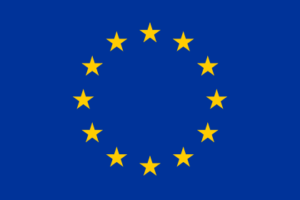Authors: Kirsty Wallis, Thomas Kaarsted, Simon Worthington, Alisa Martek and Dragana Janković.
Library Infrastructures and Citizen Science
Section Editor Kirsty Wallis
v1.0, 2023
Series: Citizen Science for Research Libraries — A Guide
DOI: 10.25815/tz0x‑m353
GALLERIES, LIBRARIES & MUSEUMS (GLAM): CROWDSOURCING IN CULTURAL HERITAGE
Text modified from original by Mia Ridge, British Library from the book The Collective Wisdom Handbook: perspectives on crowdsourcing in cultural heritage (Ridge et al. 2021).
Article DOI: 10.25815/r39f-t404
A crowdsourcing project are often core components of citizen science projects and can create joy, inspire curiosity, foster new understanding, encourage wider social connections, promote learning, and help people cultivate new skills and expertise. To help illustrate the possibilities, we have collated an overview of key concepts, including types of crowdsourcing projects, and some of the complexities you will encounter. Ridge, Ferriter and Blickhan defined crowdsourcing in cultural heritage as “a form of digitally-enabled participation that promises deeper, more engaged relationships with the public via meaningful tasks with cultural heritage collections,” and said that, “at its best, digitally-enabled participation creates meaningful opportunities for the public to experience collections while undertaking a range of tasks that make those collections more easily discoverable by others.”
Any account of this large and growing field is necessarily broad. It encompasses a wide range of human knowledge and understanding. To reflect that diversity, we strive to be capacious in our definitions, discussion, and examples, although we have largely left aside the kinds of crowdsourcing projects in the sciences and for-profit sectors. We expand the discussions in the full book (linked above) when possible with case studies and examples to diversify, complicate, or add extra nuances to the larger narratives in this book.
Each crowdsourcing project is driven by a larger purpose. Those purposes can be as diverse as the people who build crowdsourcing projects. We might start with a research question, for example, as when the Zooniverse crowdsourcing platform began with a single project asking people to help classify distant galaxies. Along with collectively driven inquiries, many crowdsourcing projects seek to expand access to a given collection by enlisting people’s help with transcribing, tagging, or other tasks. Converting scans into searchable text alone can make items in large collections much easier to find for specialists and casual visitors alike. Crowdsourcing can open up new possibilities for research that could not have existed otherwise, fundamentally changing authoritative practices, definitions, and classifications.
Sometimes, when we talk about a crowdsourcing endeavor, colleagues or friends might ask “aren’t you just asking for free labour?” That is a common enough question, usually coming from people who have not had a chance to appreciate the sense of shared purpose and community that a crowdsourcing project can inspire.
Crowdsourcing projects can be a lot more than just augmenting a digitized collection of materials. While plenty of sites invite users to contribute content, crowdsourcing sites differ in that there may be even greater value to be had in undertaking the task, rather than restricting value to the content produced. The process of starting and running a project can present the opportunity to invite people to contribute to the store of knowledge flowing through your organization or institution. Seeing crowdsourcing projects as more than the sum of their tasks or end products allows us to imagine new horizons for our institutions, organizations, and affiliated communities. At its best, crowdsourcing increases public access to cultural heritage collections while inviting the public to engage deeply with these materials.
Clear commitments to certain values can help create spaces for more diverse voices. The British Library’s In the Spotlight project sought to offer spaces for engagement. The Colored Conventions Project’s principles invite people to reflect critically while browsing the recovered histories of Black lives and culture. Others, such as Zooniverse, ask project creators to agree to provide open access to the results of their crowdsourcing projects.
What is unique about cultural heritage crowdsourcing?
Factors that make cultural heritage crowdsourcing projects different from other forms of crowdsourcing include the purposes behind their creation, motivations for participation, project content and data output, as well as theories of cultural heritage crowdsourcing. Many of these topics will be illustrated with examples in other chapters.
Infobox: Overview of crowdsourcing project types |
| Crowdsourcing projects can be categorized in different ways. Other chapters of the book examine task types in greater detail.
One approach is to focus on the activities performed by the contributors and look at the type of tasks performed. Other options include starting from the type of data processed (e.g., text vs images), size of the project (small, volunteer-led project vs large, institution-supported initiative), or the aim of the project (improve the accessibility of collections, generate or process research data, re-balance focus of collections). Even though it may be difficult to classify projects by type of task alone, it can nevertheless be useful to consider the main data-centered processes employed in crowdsourcing projects. Common examples include: |
|
| What all the above processes have in common is that they rely heavily on the abilities of humans to identify and process information, for example, to quickly identify items in a picture, or read and understand the content of a text. |
Designing cultural heritage crowdsourcing projects
Existing tools
Existing tools are a great option if you are new to crowdsourcing, or if you do not have the time or resources to create a bespoke solution. They are less expensive (and often free to use), allow you to build on the experience of others, and can be fairly quick to set up. Participant communities and guided tutorials are often a great way to explore these resources before committing to a single one.
The trade-off of using existing tools is that you may need to adapt your objectives based on the features that the tools offer, as the options for customizable features may vary. Additionally, you will need to consider what other tools you plan to use, as interoperability may be an issue as well.
Case study: explore crowdsourcing with the Zooniverse Project Builder
Zooniverse is a crowdsourcing platform that hosts a large number of projects and includes an existing community of more than 2.2 million participants. Through our open-source, browser-based Project Builder, undefined anyone can design and run their own crowdsourcing project for free. Tools such as the Project Builder can be a useful way for you and your team to quickly set up a test project to explore workflows and task design options in a low-risk environment.
Bespoke tools
If your project requires specific features that are not available in an existing tool, your team may consider creating (or hiring someone to create) bespoke tools. The benefit of bespoke tool creation is that you can get exactly what you want for your project. However, this process is often prohibitively expensive and difficult to sustain. It is important to weigh your options and consider just how necessary your desired custom features may be.
Case study: Building custom projects with the Zooniverse platform
The Zooniverse platform also supports custom project and tool development in cases where the Project Builder toolkit is not sufficient for a project’s needs. In these cases, our team will work with external partners to apply for grant funding to support the custom development effort in conjunction with larger project goals undefined. For example, in 2020, the British Library joined The National Archives (UK), the Royal Botanic Garden Edinburgh, and the Royal Museums Greenwich to apply for funding from the Arts and Humanities Research Council (AHRC) to support the creation of a new indexing tool that will allow participants to choose what items they want to work on within a project. This work is being carried out as part of the larger Engaging Crowds: Citizen research and heritage data at scale research effort, one of eight foundational projects in the AHRC’s “Towards a National Collection: Opening UK Heritage to the World” program.
Customized tools
As the range and availability of existing tools grow, the chance of finding the right tool for your project also increases. However, it can often be the case that an existing tool is not quite right, perhaps lacking a particular feature, but is otherwise perfectly fine. When that is the case, you might consider customizing an existing tool to meet your requirements. For some tools, this is the main way it is developed and supported. See, for example, the open-source tool Omeka, where users and developers help to enhance the tool and support the user community.
Case study: Tool customization at the Newberry Library
Newberry Transcribe is an ongoing project to transcribe diaries, letters, and journals. They are attempting to serve two user groups: transcribers, who need to find (and transcribe) new documents, and researchers who are interested in searching and referencing documents that have already been transcribed. No tool supported both of these approaches, so they customized. They used a custom front end (written in Node.js & React) over Omeka and its Scripto plugin, which itself uses MediaWiki to store its transcription data. It pulls from the Omeka API to filter and sort the items and use the MediaWiki API to power the search of the transcribed text.
Many aspects of planning and designing a crowdsourcing project are similar to what you would find in other projects. You need to define your goals and objectives, identify and mitigate risks, and acquire and manage resources. You have to plan and make decisions about the choice of technology, data, communication, testing, evaluation and much more. Here we have focused on showing how this can be done in the context of cultural heritage crowdsourcing.
Article links
- In the Spotlight project – https://www.libcrowds.com/ (archived)
- Colored Conventions Project – https://coloredconventions.org/about/team/
- Zooniverse – https://www.zooniverse.org/
- Engaging Crowds: Citizen research and heritage data at scale – https://tanc-ahrc.github.io/EngagingCrowds/
- Towards a National Collection: Opening UK Heritage to the World – https://www.nationalcollection.org.uk/
- Newberry Transcribe – https://publications.newberry.org/transcribe/
Bibliography
User Type
- Educator/museum
- Researcher/research institution
Resource type
- Case studies
- Recruiting citizens
Research Field



